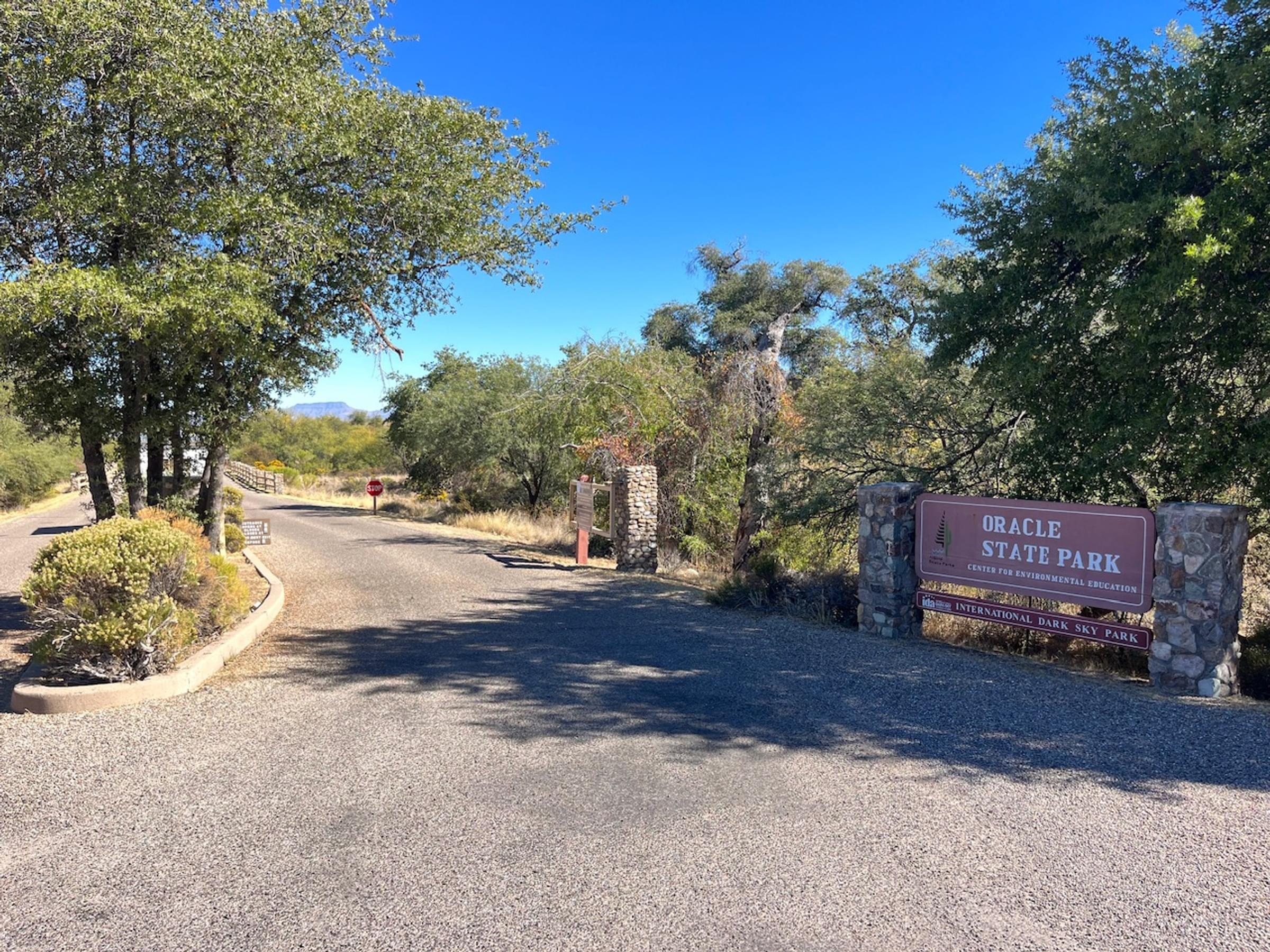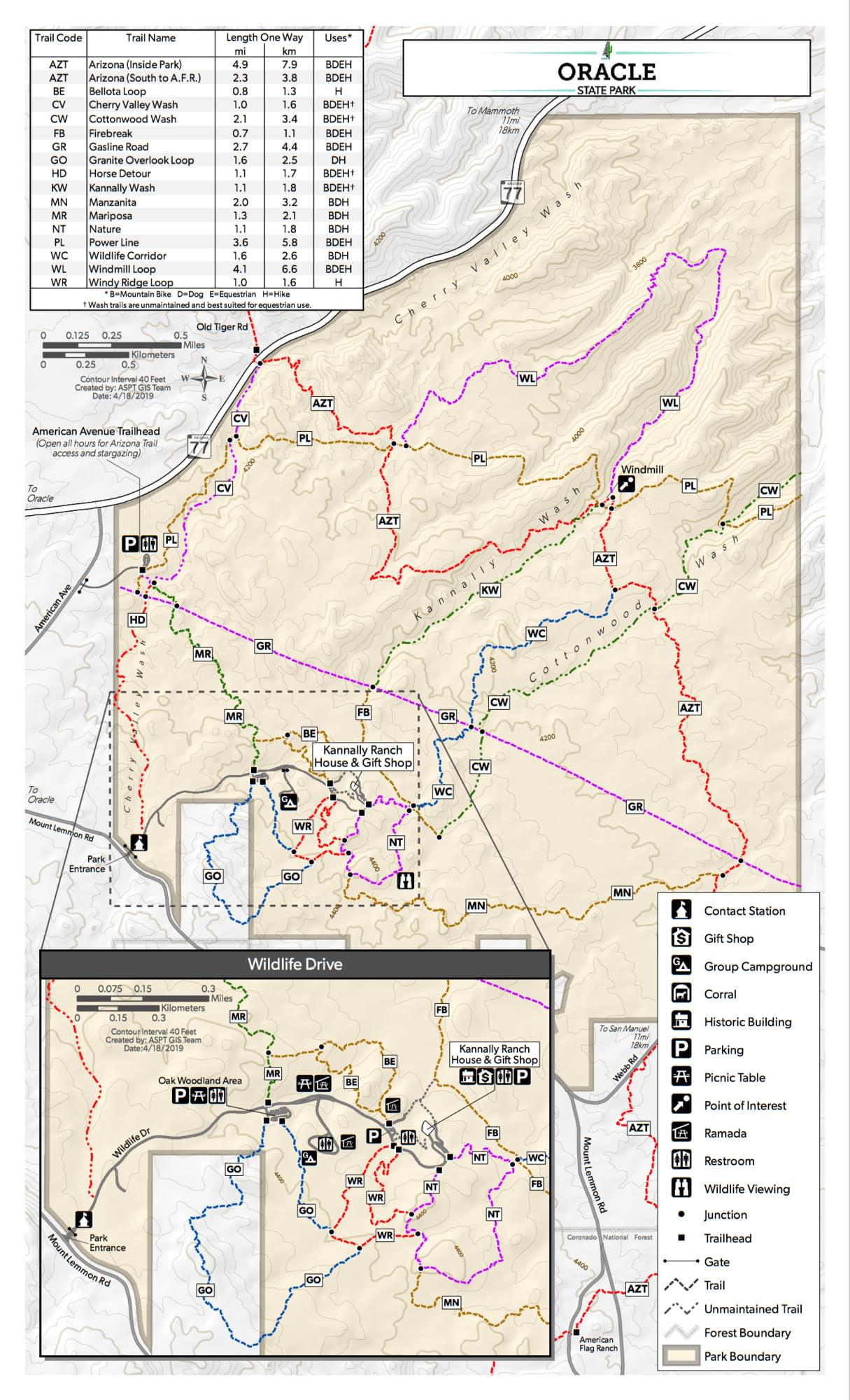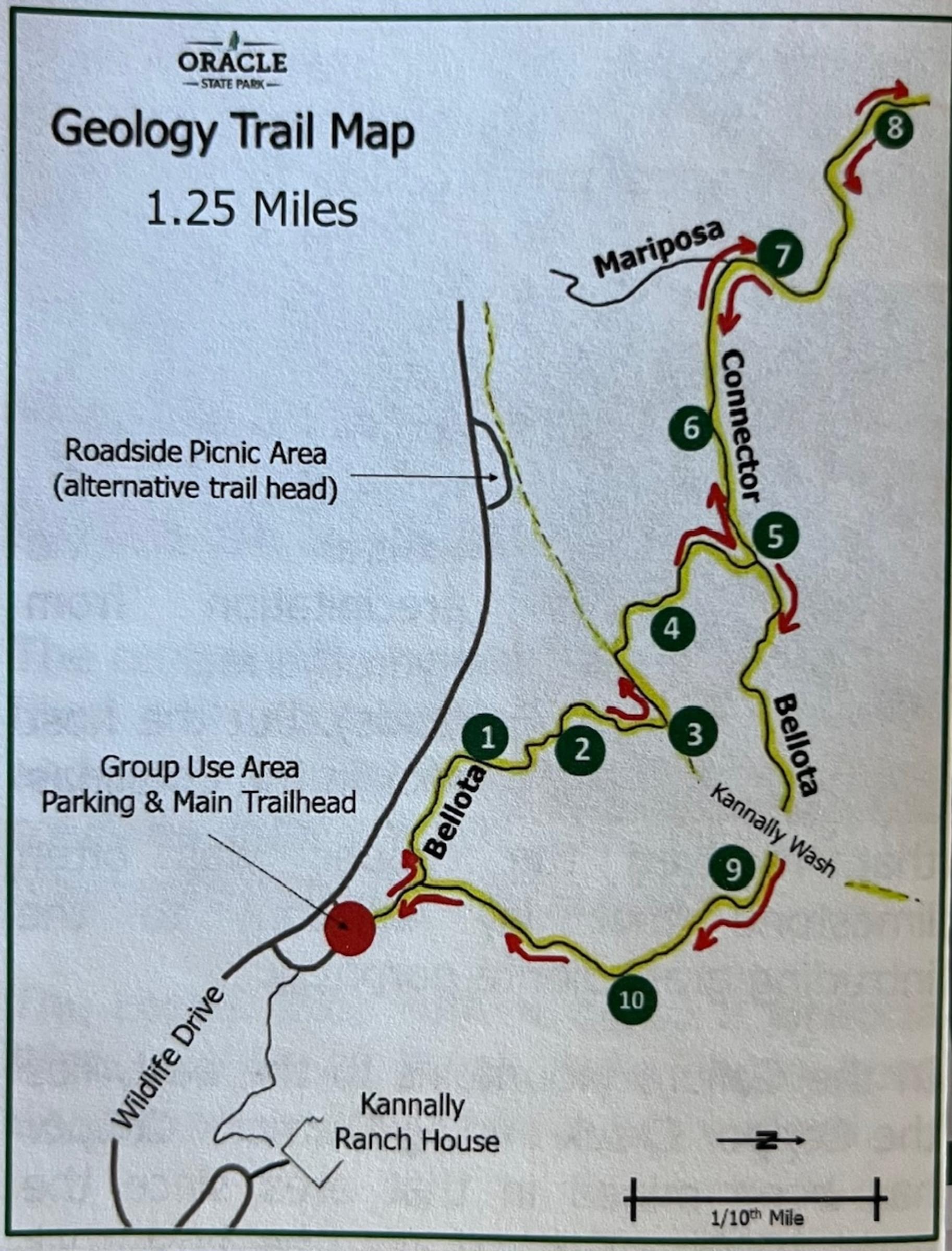Oracle State Park

Tips for Birding
The park has modern, handicap accessible restrooms at the Group Use Area and Ranch House.
Take plenty of water. Remember, if you hike down to the windmill, it is uphill coming back.
Birds of Interest
Among USFWS-designated Birds of Conservation Concern for the Sierra Madre Occidental and Sonoran Desert regions, the following species have been listed multiple times for the Park: Costa's Hummingbird (August-May), Broad-tailed Hummingbird (April-May and August-September), Gila Woodpecker (year round), Gilded Flicker (November-April), Olive-sided Flycatcher (May and August-September), Plumbeous Vireo (September-May), Verdin (all year), Curve-billed Thrasher (all year), Bendire's Thrasher (January-June), Phainopepla (all year), Rufous-winged Sparrow (all year), Black-chinned Sparrow (October-May), Scott’s Oriole (March-October), Virginia’s Warbler (April-May and September), Black-throated Gray Warbler (March-May and August-October), Pyrrhuloxia (all year), and Varied Bunting (June-August).
Rufous Hummingbird, a species of Continental Conservation Concern, appear in a few lists March and September. Other hummingbird species found in the Park include Black-chinned (April-October), Anna's (year round), and Broad-billed (February-October). Anna's are by far the most common.
Harris's, Cooper's, and Red-tailed Hawk are observed year round. Swainson's and Zone-tailed, April-September; Sharp-shinned Hawk and Northern Harrier, October-April. Common Black Hawk have been infrequently sighted late March into mid April.
Whereas Great Horned Owl are listed year round, Western Screeh have been noted mid winter through mid spring, and Barn from late summer into early fall.
In addition to the woodpeckers already mentioned, Ladder-backed (and to a much lesser frequency, Acorn) are observed year-round. Northern Flicker are present October into April.
Some flycatchers, such as Olive-sided, Hammond's, Dusky, Gray, and Western, are observed only during migration months of April-May and August-September. Others, such as Vermillion, Ash-throated, Brown-crested, Western Wood-pewee, Cassin's Kingbird, and Western Kingbird, stay in the park spring and summer. Northern Beardless-Tyranulet are observed mainly December-April, but have also been recorded in July-August. Willow Flycatcher have been noted in September. Say's Phoebe, the Park's most common flycatcher, are found year-round.
Black-tailed Gnatcatcher are more commonly observed than Blue-gray.
Bell’s are the most frequently observed vireo, appearing April through September. Cassin’s and Warbling Vireo appear April-May and August-September. Hutton’s are found in all but the warmest months of June-August.
Bullock’s and Hooded Oriole are present at the same time as Scott’s.
The most frequently observed warbler is Lucy’s (March-July), but many other species find their way to the Park during migration months.
Birders may want to brush up on the calls of Chihuahuan vs Common Raven as well as Chihuahuan vs Western Meadowlark; all four species are present.
About this Location
For 75 years, the Kannally family ranched the Catalina Mountains property that now comprises Oracle State Park. Lucille, the last of the family, willed 4,000 acres to Defenders of Wildlife, which acquired the land in 1976 with the stipulation that it be always used as a wildlife refuge. That organization later deeded the complete allotment to Arizona State Parks, which opened the property to the public in 2001. The park offers day-use picnic areas and over 15 miles of trails for use by hikers, mountain bikers, and equestrians. A section of the Arizona Trail crosses through the park. And it is a designated International Dark Sky Park.
Oracle State Park also serves as a Center for Environmental Education and provides programming for all ages. Interactive programs for school groups are offered by reservation. These programs are conducted along trails, so students learn about habitat and the interrelationships between plants, animals, and people.
In the summer the park is officially open from 7 am to 3 pm; in winter park hours are from 8 am to 4 pm. The American Avenue trailhead parking lot is open seven days a week sunrise to sunset to access the Arizona Trail and to accommodate after-hours use by stargazers. There is an entrance fee of approximately $7 for this park. The original Kannally ranch house now serves as the Visitor Center.
Notable Trails
The Park's website has an excellent description of park trails.
Features
Restrooms on site
Wheelchair accessible trail
Content from Official Website, Noah Henkenius, and John Montgomery
Last updated November 16, 2023

 10 geology-related interpretive signs
10 geology-related interpretive signs John Montgomery